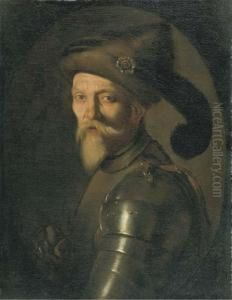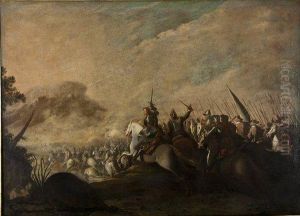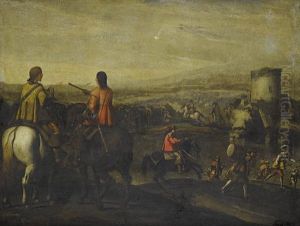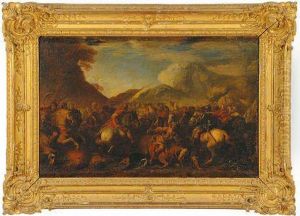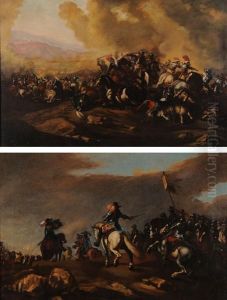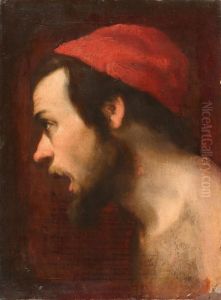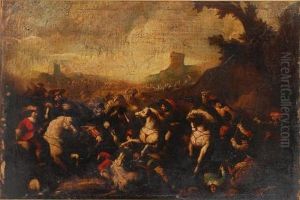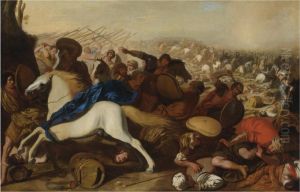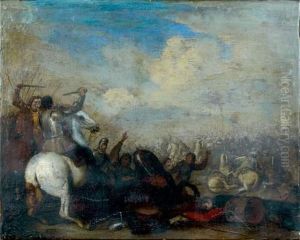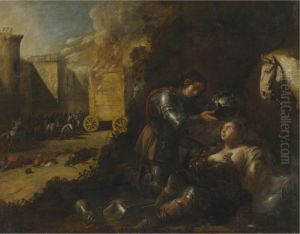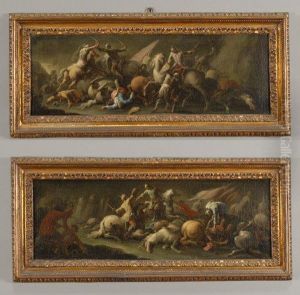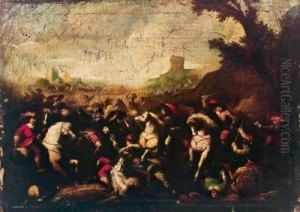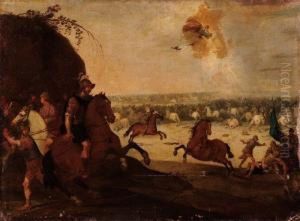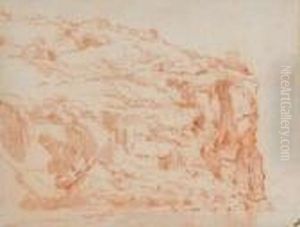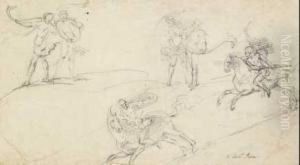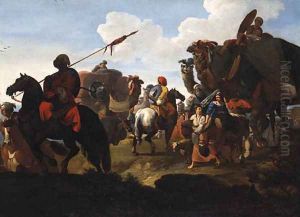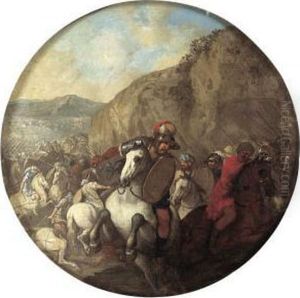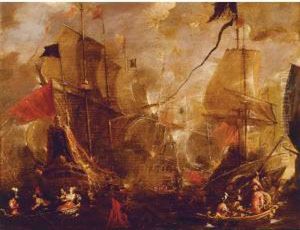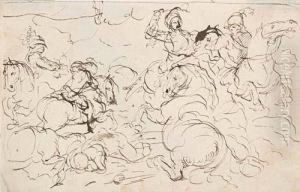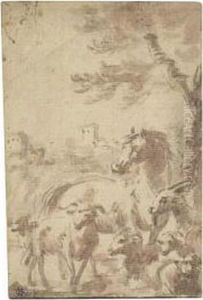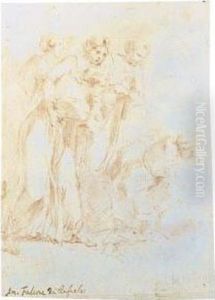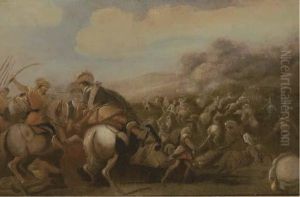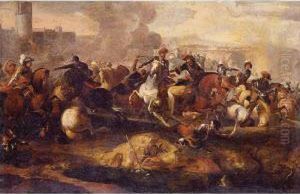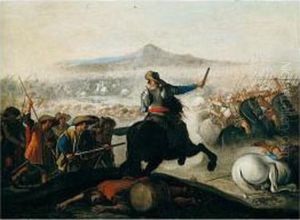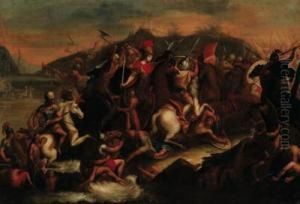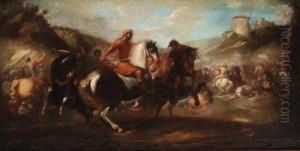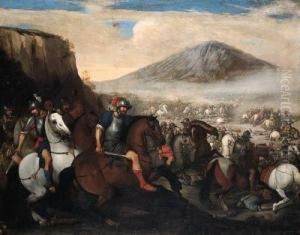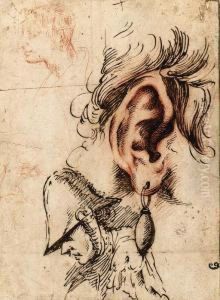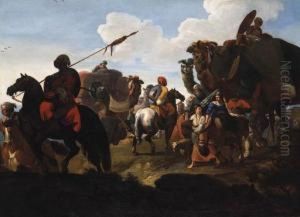Anielo Falcone Paintings
Aniello Falcone was an Italian Baroque painter, active in his native city of Naples during the first half of the 17th century. Born in 1600, Falcone is best known for his battle scenes, a genre in which he was particularly adept and which became highly sought after by collectors of the time. His work in this area was so influential that he was nicknamed 'L'Oracolo delle Battaglie' (the Oracle of Battle Scenes).
Falcone was a pupil of the painter and printmaker Francesco Guarino, where he honed his skills in depicting the human figure and learned the dynamic compositions that would later characterize his battle scenes. He was deeply influenced by the naturalism of Caravaggio and the vibrant Neapolitan school of painting which included artists like Jusepe de Ribera and his contemporary, Salvator Rosa, with whom he is often compared.
During his lifetime, Falcone also engaged in teaching, and his studio attracted many students. He played a significant role in the Neapolitan art scene and was involved in the foundation of the Accademia di Disegno in Naples, an important institution for the training of artists in the city.
However, Falcone's life was not just one of artistic achievements. He lived through turbulent times, including the eruption of Mount Vesuvius in 1631 and the outbreak of the plague. Moreover, he was involved in the insurrection against Spanish rule during Masaniello's revolt in 1647. His involvement in this political upheaval led to a period of difficulty, and it is believed that he had to go into hiding for a time.
Aniello Falcone's work was characterized by dynamic compositions, a dramatic use of light and shadow, and a keen attention to detail, especially in the depiction of military attire and the chaos of battle. His legacy includes not only his own paintings but also the influence he exerted on his students, many of whom went on to become prominent artists themselves.
Falcone died in 1665 in Naples. His works continue to be appreciated for their historical value and artistic excellence, and they can be found in museums and private collections around the world. His contributions to the genre of battle painting have also been recognized as a precursor to the later developments in this field.
